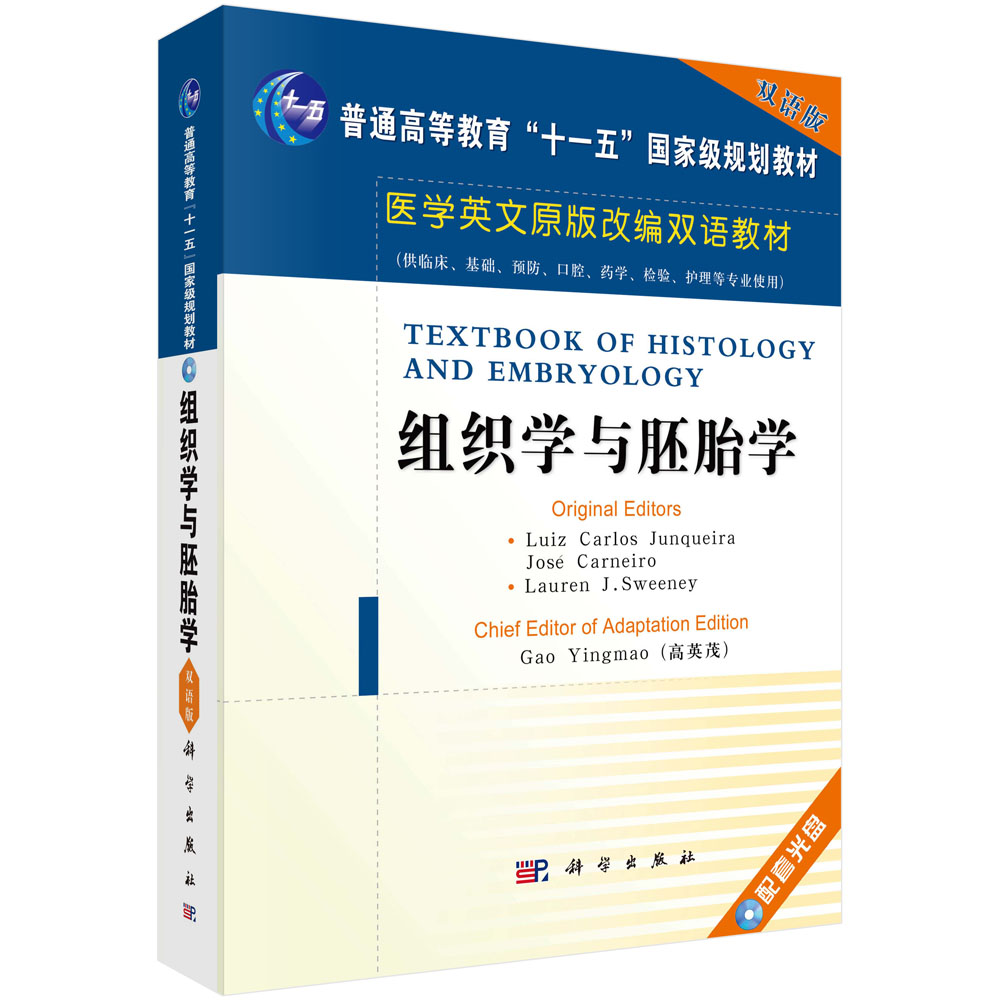“精要速览系列(Instant Notes Series)”丛书是国外教材“Best Seller”榜的上榜教材.该系列结构新颖,视角独特,重点明确,脉络分明;图表简明清晰;英文自然易懂,被国内多所重点院校选用作为双语教材。第二版在第一版基础上进行修订,涵盖化学学科主要概念,简析重要术语,通过生物学事例解释其化学原理.第二版新增加改动比较大的内容包括水,生物体系的溶剂;生物学中重要的小分子;重要的生物大分子;热力学;园二色等。
样章试读
目录
- 目录
第二版前言
第一版前言
缩略词
A 元素(1)
A1 元素周期表(1)
A2 电子排布(6)
A3 同位索(8)
B 化学键和分子形状(15)
B1 分子轨道(15)
B2 化学键的性质(19)
B3 一些小分子的形状(24)
B4 化学结构式的画法(28)
B5 化学键的断裂(31)
C 水,生物体系的溶剂(33)
C1 物理性质(33)
C2 化学性质(37)
D 碳,地球生命的基石(41)
D1 碳的性质(41)
D2 有机物的命名(44)
E 有机分子的三维结构(49)
E1 异构体(49)
E2 立体异构(56)
E3 光学活性和拆分(64)
F 生物学中重要的小分子(67)
F1 磷酸和磷酸盐(67)
F2 氮气(70)
F3 氧气(75)
G 生物体中的一些金属(81)
G1 轻过渡金属(81)
G2 铁(85)
G3 镁和锰(90)
G4 钴和钼(95)
H 分子作用力(101)
H1 氢键(101)
H2 疏水相互作用(106)
I 含碳化合物的基本反应类型(111)
I1 反应物种(111)
I2 有机反应类型(115)
I3 影响反应的因素(122)
J 有机化合物分类(127)
J1 醇及相关化合物(127)
J2 醛和酮(132)
J3 羧酸和酯(138)
J4 胺和酰胺(142)
K 重要的生物大分子(147)
K1 蛋白质(147)
K2 核酸(150)
K3 脂(154)
L 芳香族化合物(161)
L1 芳香性(161)
L2 天然芳香族化合物(166)
M 生物分子的化学合成(173)
M1 肽的合成(173)
M2 寡核苷酸的合成(180)
N 溶液(187)
N1 劳里-布能斯特酸碱(187)
N2 酸碱解离常数(190)
N3 水溶液的酸碱性(193)
N4 缓冲(196)
N5 溶解度(202)
O 化学热力学概论(205)
O1 基本概念(205)
O2 热力学第一定律(207)
O3 热力学第二定律(211)
O4 吉布斯自由能(214)
P 动力学(217)
P1 引言(217)
P2 反应级数的测定(221)
P3 分子性(223)
P4 酶动力学(226)
P5 催化和热力学及动力学控制(233)
Q 谱学(237)
Q1 电磁波谱(237)
Q2 紫外可见光谱(2/10)
Q3 荧光(2/15)
Q4 红外光谱(249)
Q5 网二色(253)
Q6 核磁共振谱(258)
Q7 质谱(267)
进一步阅读的文献(273)
索引(275)
CONTENTS
Abbreviations
Preface to Second Edition
Preface to First Edition
Section A-The elements 1
A1 The periodic table 1
A2 Electron configuration 6
A3 Isotopes 8
Section B-Chemical bonds and molecular shape 15
B1 Molecular orbitals 15
B2 Nature of chemical bonding 19
B3 Shapes of some small molecules 24
B4 Drawing chemical structures 28
B5 Cleavage of chemical bonds 31
Section C-Water the biological solvent 33
C1 Physical characteristics 33
C2 Chemical properties 37
Section D-Carbon. the basis for life on Earth 41
D1 Properties of carbon 41
D2 Naming organic compounds 44
Section E-3D molecular structure of organic compounds 49
E1 Isomerism 49
E2 Stereoisomerism 56
E3 Optical activity and resolution 64
Section F-Small inorganic molecules of biological importance 67
F1 Phosphoric acid and phosphates 67
F2 Nitrogen 70
F3 Oxygen 75
Section G-Some metals in biology 81
G1 The early transition metals 81
G2 Iron 85
G3 Magnesium and manganese 90
G4 Cobalt and molybdenum 95
Section H-Molecular interactions 101
H1 Hydrogen bonds 101
H2 Hydrophobic interactions 106
Section I-Common reaction types of carbon based compounds 111
I1 Reactive species 111
I2 Classification of organic reactions 115
I3 Factors affecting reactivity 122
Section J-Organic compounds by chemical class 127
J1 Alcohols and related compounds 127
J2 Aldehydes and ketones 132
J3 Carboxylic acids and esters 138
J4 Amines and amides 142
Section K-Important biological macromolecules by class 147
K1 Proteins 147
K2 Nucleic acids 150
K3 Lipids 154
Section L-Aromatic compounds 161
L1 Aromaticity 161
L2 Natural aromatics 166
Section M-Chemical synthesis of biological molecules 173
M1 Peptide synthesis 173
M2 Oligonucleotide synthesis 180
Section N-Aqueous behavior 187
N1 Lowry Bronstead acid and base 187
N2 Dissociation constants of acids and bases 190
N3 Acidity and alkalinity of aqueous solutions 193
N4 Buffers 196
N5 Solubility 202
Section O-Elementary thermodynamics 205
O1 Basic concepts 205
O2 First law of thermodynamics 207
O3 Second law of thermodynamics 211
O4 Gibbs free energy 214
Section P-Kinetics 217
P1 Introduction 217
P2 Determination of reaction order 221
P3 Molecularity 223
P4 Enzyme kinetics 226
P5 Catalysis and thermodynamic versus kinetic control 233
Section Q-Spectroscopy 237
Q1 The electromagnetic spectrum 237
Q2 Ultraviolet visible spectrophotometry 240
Q3 Fluorescence 245
Q4 Infrared spectrophotometry 249
Q5 Circular dichroism 253
Q6 Nuclear magnetic resonance spectroscopy 258
Q7 Mass spectrometry 267
Further reading 273
Index 275





























